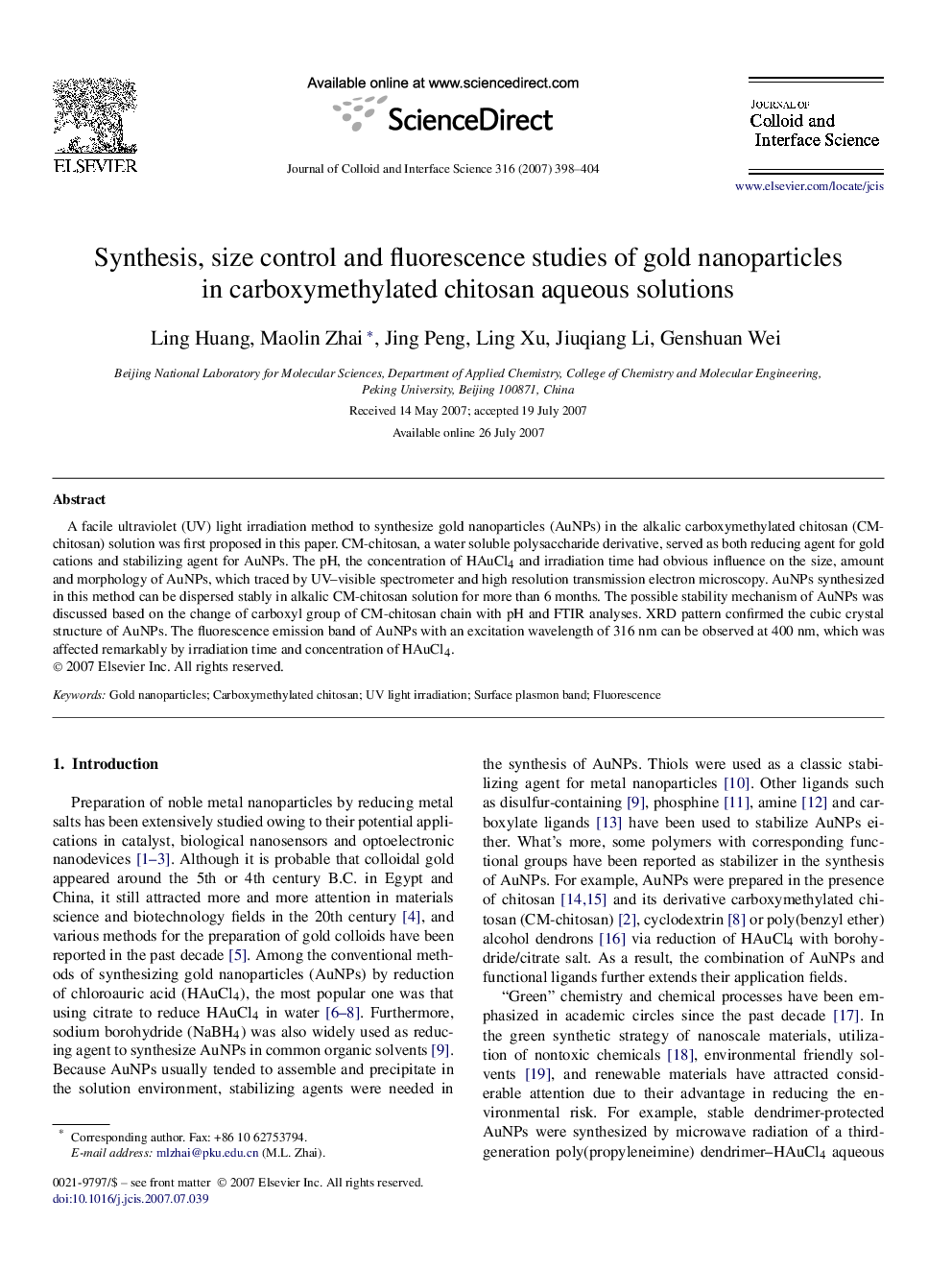| Article ID | Journal | Published Year | Pages | File Type |
|---|---|---|---|---|
| 612020 | Journal of Colloid and Interface Science | 2007 | 7 Pages |
A facile ultraviolet (UV) light irradiation method to synthesize gold nanoparticles (AuNPs) in the alkalic carboxymethylated chitosan (CM-chitosan) solution was first proposed in this paper. CM-chitosan, a water soluble polysaccharide derivative, served as both reducing agent for gold cations and stabilizing agent for AuNPs. The pH, the concentration of HAuCl4 and irradiation time had obvious influence on the size, amount and morphology of AuNPs, which traced by UV–visible spectrometer and high resolution transmission electron microscopy. AuNPs synthesized in this method can be dispersed stably in alkalic CM-chitosan solution for more than 6 months. The possible stability mechanism of AuNPs was discussed based on the change of carboxyl group of CM-chitosan chain with pH and FTIR analyses. XRD pattern confirmed the cubic crystal structure of AuNPs. The fluorescence emission band of AuNPs with an excitation wavelength of 316 nm can be observed at 400 nm, which was affected remarkably by irradiation time and concentration of HAuCl4.
Graphical abstractA facile ultraviolet light irradiation method to synthesize gold nanoparticles in the alkalic carboxymethylated chitosan solution (pH 12.4) was first proposed.Figure optionsDownload full-size imageDownload as PowerPoint slide
